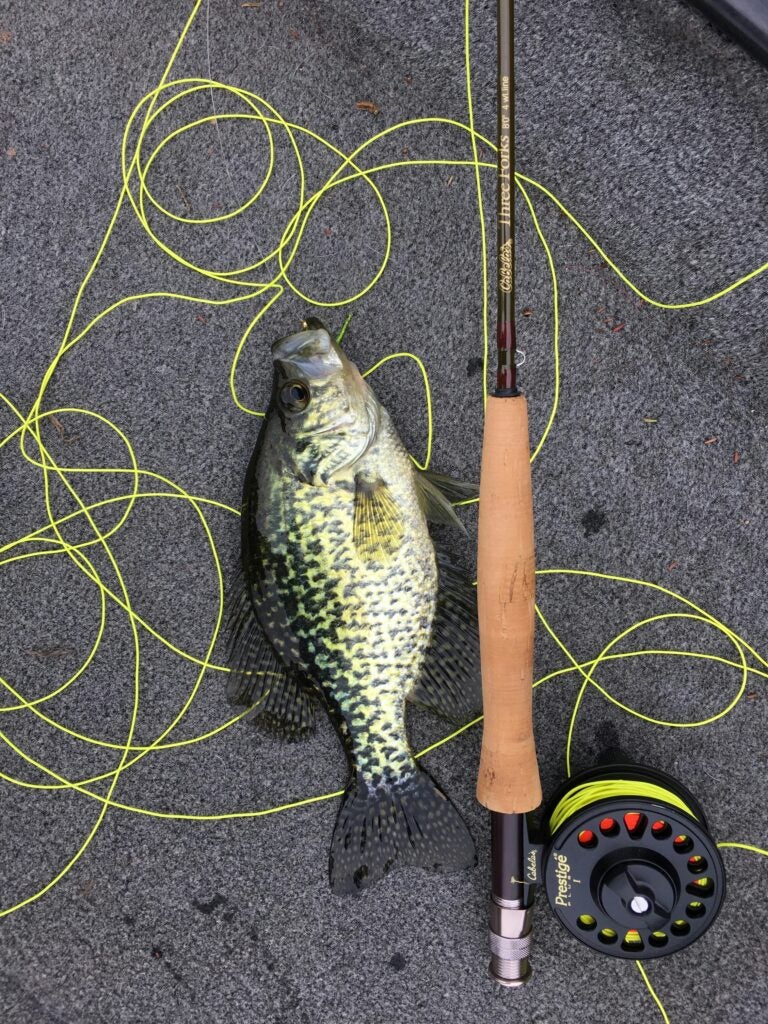Crappie is third most popular freshwater fish
Published 8:22 am Wednesday, March 6, 2024

- Crappie is third most popular freshwater fish. (David Kinnear/Unsplash)
Prime spawning season starts in late March
By James L. Cummins
Conservation Corner
Crappie are the third most popular freshwater fish in Mississippi, behind bass and catfish. In Mississippi crappie are referred to as white perch, but in Louisiana they are known as “sac-a-lait.”
Crappie are members of the sunfish family. This family includes such other popular game fish as bluegill, redear, smallmouth bass, spotted bass, and largemouth bass. Warmouth (goggleye) and other fish commonly referred to as bream are also members of the sunfish family.
There are two species of crappie in Mississippi, the white and the black crappie. The spots on the side of white crappie form several faint vertical bars, while spots on the black crappie are irregular.
During spring, it is sometimes hard to discern the vertical bars on the white crappie. Some anglers, who do not know how to tell the two species apart, erroneously think the black crappie is the male, and the white crappie is the female.
Crappie have been found spawning from early March to early June, although late March to mid-April is generally the prime spawning period. Once spawning begins, it will occur over a 30- to 40-day period.
Spawning is initiated by water temperature and photoperiod, with spawning beginning when water temperature reaches 57°F with the prime spawning occurring between 60 to 68°F. Larger crappie have more eggs than smaller crappie. Where a 2-year-old crappie may have 24,000 eggs, a 5-year-old crappie will have 195,000 eggs. Larger crappie are believed to spawn earlier.
Crappie, like most other sunfish, are nest builders. The male crappie fans out a depression in moderately firm substrate, usually in an area protected from the wind. Nests are usually built in the vicinity of some type of structure. Although some 2-year-old crappie will be mature, all 3-year-old crappie have reached full maturity.
After the female lays her eggs, male crappie fan them and guard the nest. The eggs sink and are adhesive, so they stick to the bottom. Hatching normally takes about 3 to 4 days, but can take longer if the water is cold or sooner if the water is warm.
Hatching of crappie eggs have been estimated to occur as early as mid-March. Crappie stay in the nest for another 4 to 5 days after hatching. The male guards the fry during this period and continues to do so for a short while after they leave the nest.
Crappie can grow relatively fast. Black crappie in Mississippi reach 4 to 5 inches when they are 1 year old, 7 inches at 2 years old, and 10 to 11 inches at 3 years old. White crappie can reach 5 to 6 inches at 1 year old, 8 inches at 2 years old, and 10 to 11 inches at 3 years old.
James L. Cummins is executive director of Wildlife Mississippi, a nonprofit, conservation organization founded to conserve, restore, and enhance fish, wildlife, and plant resources throughout Mississippi. Visit www.wildlifemiss.org.





